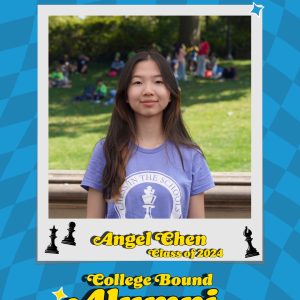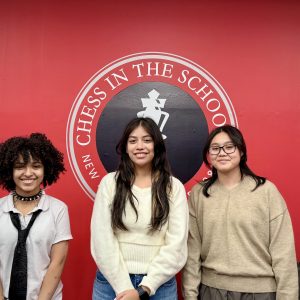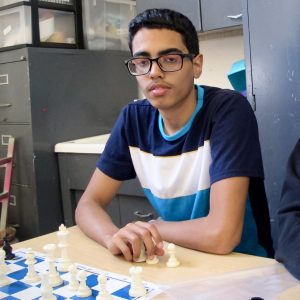On May 17, 2023, Carlos Graupera was announced as one of the finalists for the inaugural Lerner Award for Excellence in Chess Education. After the ceremony, CIS alumna Marilyn Lucero met with Carlos to talk about his experience teaching in Brooklyn, and the effect it has had on the community.
Marilyn Lucero: How did you start playing chess?
CG: I started playing chess as a kid because my Cuban grandfather taught me. But it wasn’t until college when I got my first chess book and actually tried to improve. My method of study was very old school, it was obviously before a lot of online chess resources existed like Chessable and stuff like that. I would ask other chess players what I should study and I recall that everybody was recommending Logical Chess Move by Move. Then, I started to play in tournaments around Pennsylvania and I also started to play a little correspondence chess by mail. I did anything to be exposed to the game. I was pretty obsessed with playing in tournaments until my son was born. When he was born, I felt like I could no longer justify spending a ton of time playing in tournaments, but I still managed to play for fun.
ML: How did you start teaching chess?
CG: I basically have three chapters in my life as a teacher. I’ve taught in Donna, Texas, Washington, D.C., and Brooklyn, N.Y. and I started a chess team at each school where I taught. Teaching chess is super fun because it’s like using a whole other part of my brain as a teacher; it is just a completely different way to connect with kids. It has always been a part of my dream to teach kids so they could play with each other and I could play with them. Since my son grew up in Brooklyn, he immediately started going to tournaments after learning the basic principles of chess. I even helped his school start a chess program at one point.
ML: What, like when you started teaching at PS. 503K? And what has been the biggest difference between teaching in New York compared to other states?
CG: When I started teaching in Brooklyn, I knew I wanted to start a chess club at PS. 503K, and I was able to start the chess club with two other teachers named Matt Silverman and Rachel Hsieh. When we began, I was sort of vaguely aware of Chess in the Schools. But soon after, we started taking our team to compete at CIS free weekend tournaments. We weren’t affiliated with them at first, but they quickly reached out to us and asked us to be part of the program.
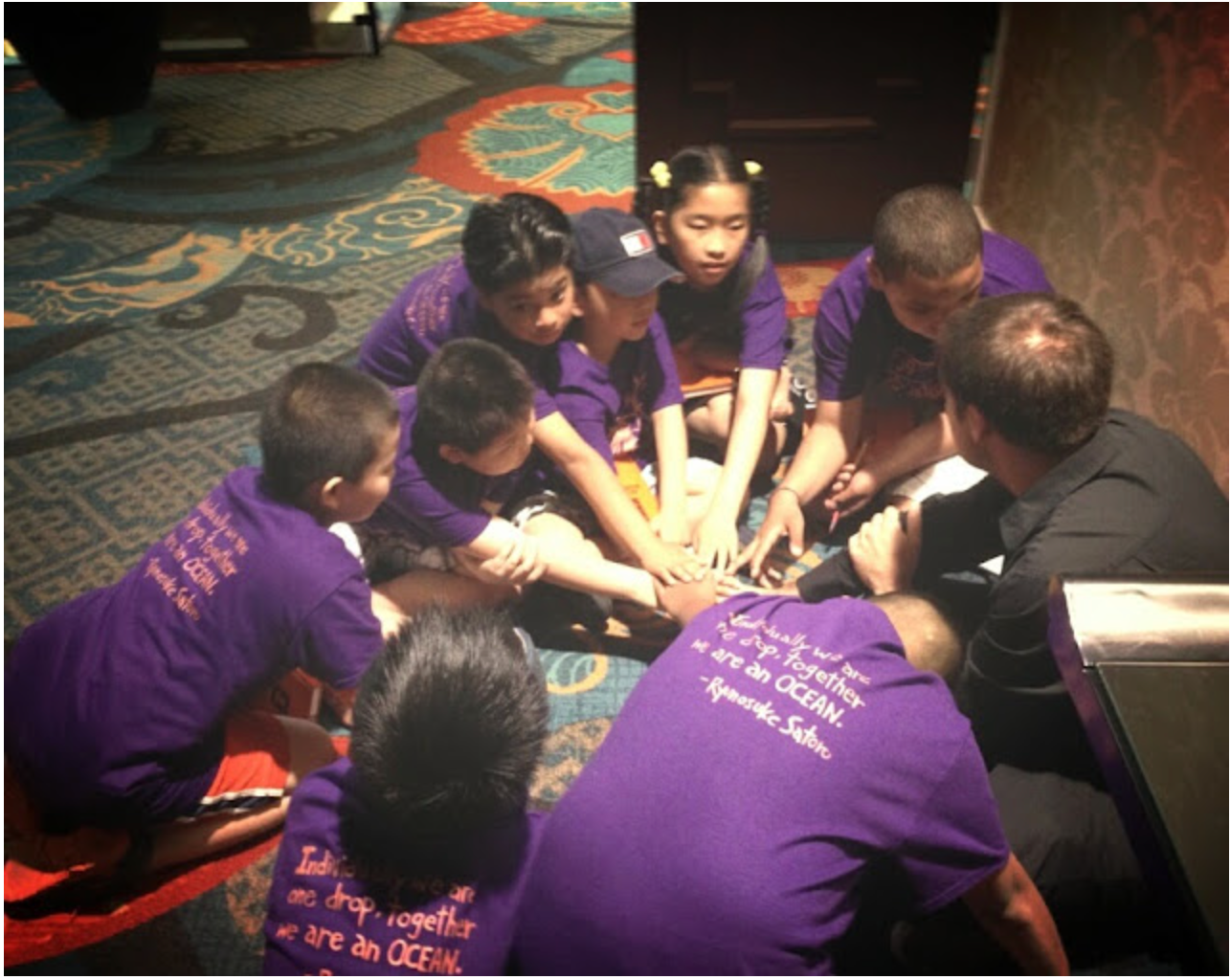
When I coached chess in Texas and DC the experiences were very similar in some ways. The tournaments that my students participated in were all adult tournaments. There weren’t many kids-only tournaments, in fact. We always went and played in the appropriate sections against adults. The other difference is that the tournaments cost money. The tournaments were not free and they were less frequent.
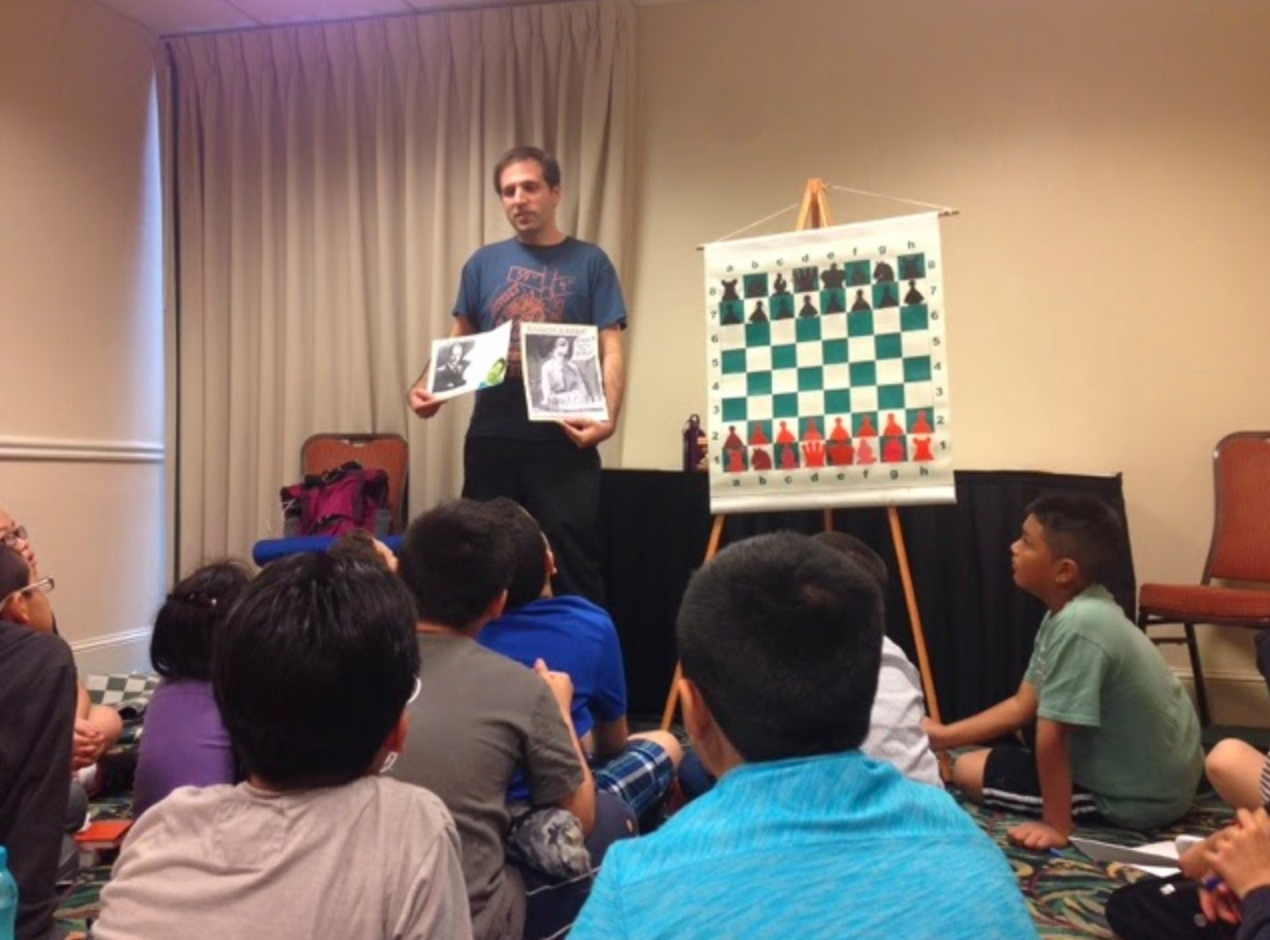
The main difference here in NYC is that this is one of the only places in the country that I know of, where kids can have free access to chess tournaments every weekend. The kids also get to be part of a network, community, and support system where they not only learn to play chess but benefit in other ways as well. Chess in the Schools has a lot of programming that they offer like the College-Bound program, obviously the resources they give to schools with coaching, and then of course the weekend free tournaments. The free tournaments are like the gem of the whole operation! Many school districts in other cities have chess programs but if kids aren’t going to tournaments, then they don’t improve. Not to mention that they are run entirely by the College-Bound kids under the tireless direction of Shaun Smith. The tournaments are the piece that links it all together. It means a lot, especially if you teach in a school that’s a Title One school where you have a lot of kids that come from working-class families that may be struggling economically. Having a program like Chess in the Schools is an amazing treasure.
ML: PS. 503K is a very diverse school, and as you mentioned a Title-One school. How does teaching students from different backgrounds affect your teaching style?
CG: The nice thing about chess is that it can be a complete equalizer. We teach in a diverse school and I feel like chess is a common language that the kids can all learn. The demographics of our school are very different from other schools that are also going to the free tournaments. Some of those schools might have more resources, and families that are more affluent, but in the end, I think we’ve shown that we can bring our kids to this tournament and be very competitive. There is opportunity and equity within chess.
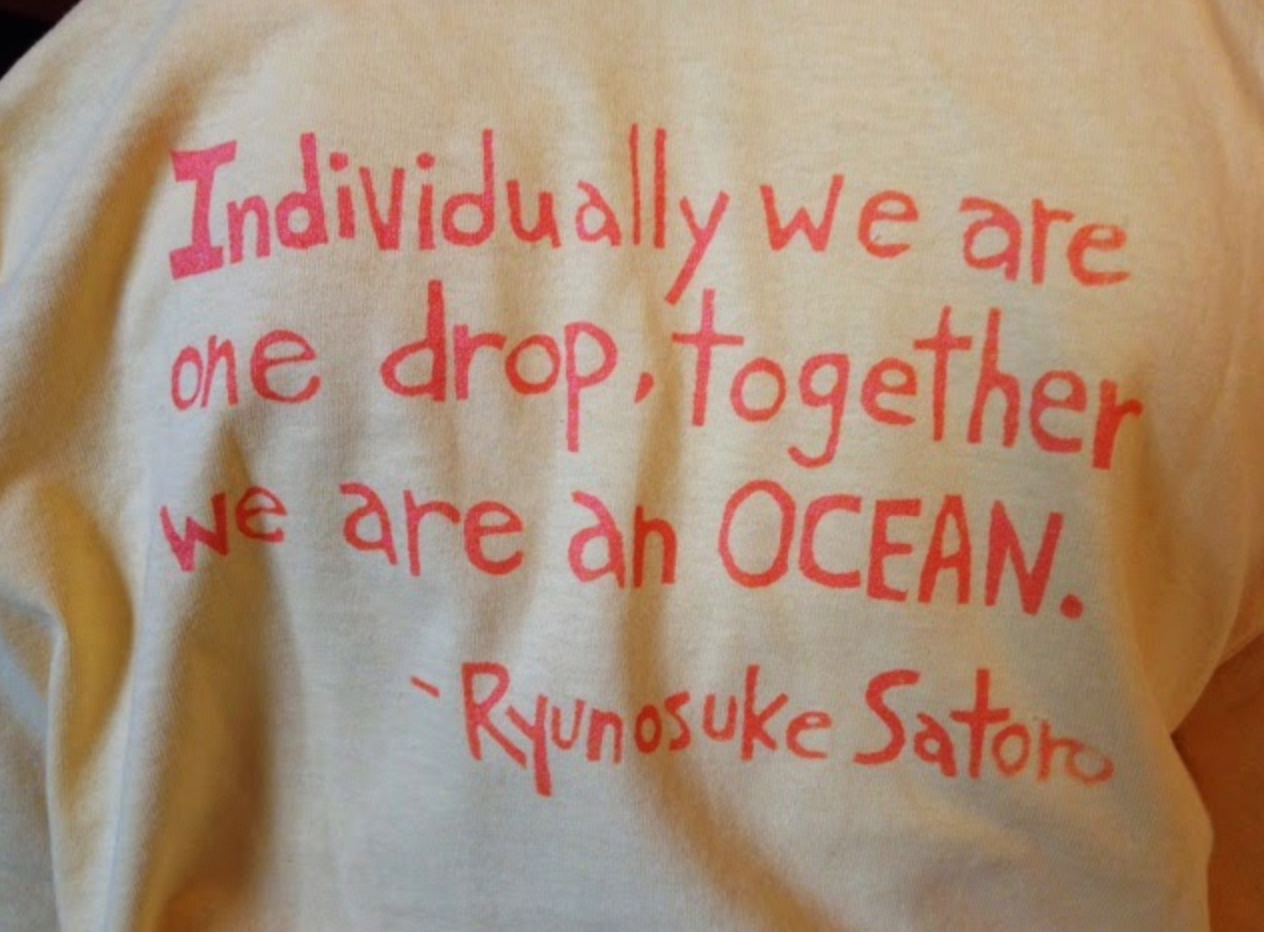
ML: What do you think has been the biggest difference from when you first started teaching chess, and now?
CG: I was younger then, so I had a lot more energy! Also, in the beginning we had a couple of other fanatical teachers that were willing to put in one million hours into making the chess program very dynamic. I think that was important because now we have many structures in place to continue having a successful program. One big difference is that nowadays we have a lot of technology that makes chess learning a lot more accessible. We can all access materials very quickly and easily. We are not just using worksheets or teaching positions on old-school demo boards. Today you can have a more dynamic presentation with the technology and, of course kids can play as much as they want online. This being said I think it’s very important for students to play over the board, play slow, and notate their games. Marc, our CIS coach and I, try to make this an important part of our club.
ML: How did the pandemic affect your ability to teach your students?
CG: I really want to give a shout-out to Marc Widmaier. I feel like Chess in the Schools and Marc did an amazing job at helping the students during the pandemic. When we started doing chess club online, we transitioned almost seamlessly. Marc had a lot of energy and an amazing “Zoom personality”! He was able to convey this energy through his lessons and keep the kids so engaged. We would have almost 60 kids on like these Zooms sometimes. It was crazy. There wasn’t any official chess club in a sense. Anybody who wanted to come could come and we were going to have a good time. Now, I think we are in a more normal teaching space where we are trying to devote more time to fundamental chess skills.
ML: You, I know that PS. 503K competes in almost every single weekend tournament that CIS has to offer. How do you help your students grow from their losses, and wins?
CG: The nice thing about chess is that it’s a repetitive practice. You do it over and over. If you lose you can always just start another game. Repetitive practice builds a lot of skills. Kids learn to handle disappointment and how to bounce back from it. Sometimes kids are very upset when they lose, but this just shows that they really care about their results. Chess is a game where you have to invest in loss to improve. Losing is really where you can truly grow.

ML: Competitive chess usually starts rocky, especially if someone doesn’t have a lot of training. How do you motivate students to get better, especially when they don’t want to move up sections?
CG: There’s always a rocky start, usually. Especially when a child begins playing in the non-rated sections of a tournament. Kids learn a few ideas and few things click and then start to win-sometimes a lot of games. Then maybe they think that’s just how it’s supposed to be, sort of like, winning is the norm. But we all know this isn’t the truth. As you improve and play tougher opponents it’s so much harder to win games, especially if your opponent isn’t making huge blunders all the time. Chess gets harder as you get better. Sometimes this is very disappointing and difficult for kids to understand and if we are not careful our students will be reluctant to challenge themselves by playing in tougher sections. We try to help them understand the process and help them keep their losses in perspective with encouraging words.
ML: What would you consider to be your own personal teaching philosophy?
CG: I really think it’s important for kids to fall in love with whatever they are doing. One should bring an element of joy and fun into the game. You have to use language that is accessible and fresh for the kids. I think that even if you have to generalize some information, that’s okay. Teaching is about communication, and I’m always thinking about the different ways I can communicate with my kids. I want to be present to them and have them respond authentically to what we are learning. I strive to allow their ideas to be heard and respected during a lesson so we can hold onto that engagement.
ML: I know that at PS. 503K you guys create friendships that will last a lifetime. At the college-bound program, we have seen groups of PS. 503K students who have been friends for like almost 10 years already. So, do you think creating friendships is something you instill in the Chess Club, or do you think that’s something that just blooms naturally while your students are playing?
CG: I think that this is the product of the community we try to create through the chess program at PS. 503K. Our players play in clubs every week after school, compete together on the weekends, travel together to cities like Tennessee, Texas, and Atlanta to compete Nationally. These experiences create strong friendships. Also, some of them decided to go on to attend Middle and High Schools like I.S. 318 and Edward R. Murrow that have great chess programs. Sometimes our players stop playing chess because their middle school doesn’t offer a chess program, but they come back once they’re eligible for the College-Bound program. They come back into the fold. There’s definitely a strong social aspect to chess, that I think is really important. I don’t know if I can take any credit for that.
ML: How do you help your students manage the pressure that comes from playing inside tournaments?
CG: I think Chess in the Schools tournaments offer a nice structure of sections so that players can feel successful and not get too frustrated too early. They divide the beginner section into three distinct levels: an Unrated, Rookie, and Novice. My students have been able to gradually gain confidence instead of being put into a “catch-all” U1000 section. Once I know that they are doing well I will try to put them into the more intermediate sections like Reserve and Open.
In terms of managing stress, we just try to encourage kids to do their best. We try to point out that winning is not all about the trophy…sometimes it can be a draw against a higher rated player or just doing a great job with notation.
ML: You mentioned that kids as young as second grade start joining the chess club and start learning how to play chess. How do you motivate a child that young to like to get into chess and eventually competitive chess?
CG: We have so many kids that want to be in the chess program that there’s not enough space for them. I think the game just has an innate allure. It’s exciting and mysterious! What we have to motivate is the discipline to look deeper, play slower, notate correctly…those kinds of things. That’s the hardest part.
ML: Do you think a parent’s connection to the chess club helps the club progress?
CG: It’s really important for parents to be involved. Some parents know how to play and others don’t. There are some parents who aren’t aware of the benefits of chess because they are not players themselves. I think it’s important for parents to see what the tournaments are and what their children are doing so that they can really appreciate how amazing their kids are. I feel like we try to promote chess at every turn, which is why we have a lot of parent volunteers that help out during the tournaments. Especially these days we’ve had more parent volunteers than ever, and that’s great.
ML: What would you say is your most memorable moment teaching at PS. 503K?
CG: I mean, the very first time we went to Nationals was pretty amazing because we just didn’t have a lot of expectations. CIS arranged for IM John Batholomew to review our players’ games and give lessons in-between rounds. For me, the experience of having such a great player work with our kids felt like it justified the whole trip and in the end our kids did really well that year by winning the U1000 section. That was very memorable.
Another year we had a student who was living with his aunt while his parents were working in Tennessee. The student’s birthday was during Nationals, and his family was reunited there. We had this big amazing birthday in-between the rounds. It was very heartwarming. I remember it being a bit funny because he ended up eating so much cake that he could not play the next game!
ML: I remember when I would work tournaments, I would see all the PS. 503K chess club members with their PS. 503K chess club shirts. It was almost like that was their uniform. Can you tell me a bit more about the shirts?
CG: I’m an art teacher so I screen print the shirts myself and I design the shirts myself. I consider it a bit of branding to show off our creative side. I know the quality is not super high, but I think they have a lot of character. When we play at Nationals we color code what colors we wear on specific days. For example, on the first day of the tournament we might all wear red, the second day green, and maybe the last day black. Also, we sell shirts to raise money for our trips. They served many purposes.
ML: What does chess mean to you?
CG: I definitely see chess as a total art form. I think people who play chess are artists. There’s a saying that goes something like this, “Chess is an ocean where an elephant can bathe and a gnat can drink.” Although I may have butchered the saying, the essence is that no matter what your skill level is in chess there’s always a place for you. There’s always a sense of beauty, mystery, and self-discovery in the game…Chess also brings a lot of different types of people together which means it has the power to build community.
ML: How do you think your work has impacted you personally, and how has it impacted others?
CG: On a personal level, my work has been really fulfilling. As an art teacher, I have a ton of students, like 25 classes a week. But it’s tough to really connect with them because our time together is short, usually just 45 minutes and maybe once or twice a week. Even though I enjoy teaching art, I don’t always get the chance to connect with my students the way I do in the chess club. In the chess club we go to tournaments and trips, so I get to know students on a deeper level. I get to know entire families. On Thursday, I work until 5 o’clock because of the club, and even though it’s a long day, I always look forward to it.

ML: How has being a finalist for the Andy learner award impacted you? And what do you plan to do next?
CG: Well, I feel very honored. I think that teachers in general are kind of used to just kind of doing what they are doing and don’t have expectations of being celebrated. There are not a lot of appreciation or awards, especially when you’re teaching chess. The award is amazing because it’s shining a light where people might not be noticing. The award makes the kind of work that teachers do more visible. I am very honored to be a finalist. The award is really going to help us because we are going to use all of the cash prize to help fund a trip to next year’s States or Nationals.
